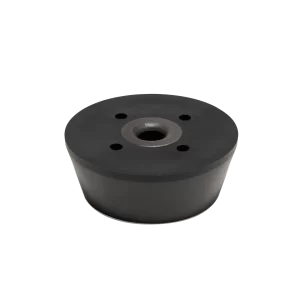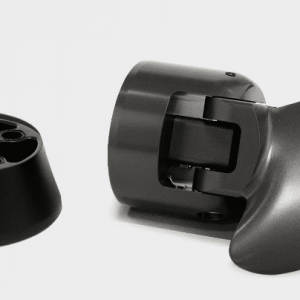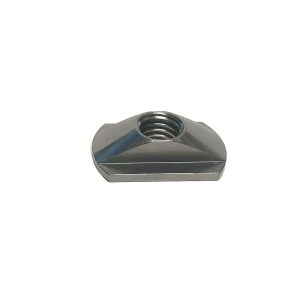- 110 Dixie Ln- Cocoa Beach, FL 32931
$799.00
WHAT’S INCLUDED: LCS Jet – Shroud, Impeller, and Nozzle LCS Base Plate Comprehensive Hardware Kit
1 in stock
Merging the groundbreaking technologies of our Lift Jet and LCS (Lift Connect System), the LCS Jet sets a new standard in eFoil propulsion, offering unparalleled versatility, performance, and the quietest ride yet. Combining the efficiency and safety of the Lift Jet with our tool-less Lift Connect System, allowing riders to seamlessly switch propulsion options within seconds.
The LCS Jet’s fully enclosed impeller ensures maximum safety and enhanced efficiency, while reducing drag for longer ride times and a more surf-like experience. Its smoother, less aggressive acceleration is perfect for beginners, offering a responsive and sporty ride. Built with the rider in mind, we’ve engineered the quietest, smoothest eFoil experience yet.
The LCS Jet features an innovative click-and-lock mechanism for easy, tool-free swapping from one propeller component to another. Joining our fixed and folding props, the LCS Jet is a key accessory in the holistic LCS ecosystem.
The LCS Jet epitomizes efficiency and performance. Developed through Computational Fluid Dynamics (CFD), it is engineered for low drag and smooth acceleration, offering a ride that’s exhilarating, smooth, and reliable.
Enhanced Rider Safety
Built with adventure in mind, the LCS Jet prioritizes rider safety above all. By integrating a fully enclosed impeller, Lift ensures a safer ride, minimizing risks without sacrificing thrill or performance. Ideal for both newcomers learning to eFoil and seasoned riders alike.
Seamless Integration within the LCS Ecosystem
The LCS Jet features an innovative click-and-lock mechanism for easy, tool-free swapping from one propeller component to another. Joining our fixed and folding props, the LCS Jet is a key accessory in the holistic LCS ecosystem.
Jet Propulsion 101
Jet propulsion is a method of propelling a watercraft by expelling a high-velocity jet of water backward. This technology is commonly used in various types of boats and personal watercraft. As water enters in the LCS Jet, the impeller (powered by the eFoil motor) accelerates its flow. It then passes through the stators on the LCS Jet Nozzle, guiding the water in a uniform, efficient manner. The water is then blown out the back of the nozzle at a greater velocity than it entered, creating a jet stream.
Overview
Each of the seven stators on the LCS Jet Nozzle has a foil cross section.
That foil section creates a pressure difference, which is used to guide the flow of water in a way to recover energy, increasing overall efficiency.
The foil section works similarly to how the foils on our wings work.
LCS Jet Performance
The Lift LCS Jet is constructed out of premium FRP (Fiber Reinforced Polymer), which has been proven to be a workhorse material. Its increased rigidity leads to unrivaled performance while also damping vibrations, equating to a powerful yet quiet ride.
The LCS Jet was designed using Computational Fluid Dynamics (CFD), which uses fluid flow simulations to analyze and optimize how fluid interacts with objects. This tool aided our engineers in building a high-performance propulsion with the lowest drag possible.
Thoughtful analysis and extensive prototyping and testing has led to the LCS Jet providing a perfectly balanced, sporty and surfy ride.
LCS Jet Safety
The main objective when designing the LCS Jet was to provide the safest eFoil ride possible, without sacrificing the performance our customers have come to expect from their Lift products.
The LCS Jet’s fully enclosed impeller provides maximum safety while riding.
The product design offers a buttery smooth, less punchy acceleration, making it both easier and safer while teaching and learning to eFoil.
LCS Jet Improvements
The LCS Jet’s design is very similar to our bolt-on version (Lift Jet), sharing its geometry, materials, and safety features.
Integrating the LCS functionality is the main upgrade to the product, allowing users to quickly swap between their other LCS products without the need for tools or hardware.
Additionally, adjustments to the rear stator design has led to improved water flow, making the LCS Jet more efficient compared to the bolt-on Jet, leading to longer ride times.
Lift Jet Vs. LCS Jet
The LCS Nozzle’s rear stators have a slightly twisted cross section when compared to the bolt-on Jet. This design more effectively guides water flow to reduce energy losses as it exits the nozzle. This leads to less energy draw from the battery.
The result is the LCS Jet is ~15% more efficient compared to the bolt-on Jet.
Recommendations and Use
The Lift LCS Jet is recommended for any riders new to eFoiling.
The LCS Jet is a great option for users who share their eFoils and/or change their propeller setups regularly.
The LCS Jet is not recommended for towing. If planning to tow, Lift recommends the original Fixed Aluminum Propeller.
The LCS Jet may not be ideal for riders >250 lbs.
Specs
Material: Fiber-Reinforced Polymer (FRP) with stainless-steel inserts.
Impeller Blade Pitch Angle: 5″
Impeller Diameter: 4.37″ (111mm)
Impeller Hub Shape: Tapered
LCS Jet Diameter: 4.8″ (widest section), 3.7″ (narrowest section)
LCS Jet Length: 3.64″ (92mm)
NOTE: All product specs listed are shared with the bolt-on Lift Jet.
Jet Components
Each Lift LCS Jet kit is sent with a complete set of hardware and tools, ensuring a seamless installation. Lift provides additional hex keys for removing currently installed bolt-on propellers as well as some spare components.
All parts are listed below, and each part’s purpose is outlined.
There are three components of the LCS Jet: Shroud, Impeller, and Nozzle.
As with all LCS products, the LCS Base Plate needs to be installed on the eFoil motor housing to install/use the LCS Jet.
Lift includes the LCS Base Plate in the accessory/kit. The base plate comes pre-installed on eFoil and standalone propulsion orders (if LCS products are chosen in configurator).
5mm Hex Key: Used to uninstall the Fixed Aluminum Propeller or original Folding Propeller from the eFoil motor housing.
3mm Hex Key: Used to install the (4) LCS Base Plate Screws to the motor housing. Also potentially used to uninstall the existing screws from the shroud or tail cone mounted on the eFoil motor housing.
2.5mm Hex Key: (Potentially) Used to uninstall the existing screws from the shroud or tail cone mounted on the eFoil motor housing.
NOTE: Not all hex keys provided the hardware kit may be used in the installation process. Lift has been updating our hardware for ongoing quality, which means older eFoils have the smaller 2.5mm motor screws (In other words, you may not need the 2.5mm hex if you have a newer eFoil). All future eFoils will use the 3mm drive, regardless of if it has a Shroud or Jet.
NOTE: The Lift LCS Jet assembly instructions assume the user is uninstalling the original Lift Aluminum Propeller and Shroud. The process will be slightly different if other propulsions are installed (Folding Propeller, Tail Cone, etc.).
LCS Base Plate: Installed onto the eFoil motor housing to enable use of any LCS propeller, LCS Tail Cone, LCS Shroud, or LCS Jet.
LCS Base Plate Screws: Used to install the LCS Base Plate onto the eFoil motor housing.
Specs: M4 x 0.7mm Thread, 8mm Long (1 extra/spare screw provided)
Thread-Locking Fluid: Placed on LCS Base Plate screws prior to installation onto the motor housing.
Motor O-Ring: Spare part, in the event the current o-ring installed on the motor is damaged or misplaced during swap.
FAQ
Q: Lift’s Jet products (either LCS or bolt-on version) are larger in diameter than other eFoil jets (Flite, Awake, Aerofoils, etc.). What gives?
A: The Lift Jet and LCS Jet are designed and tuned to maximize performance and efficiency. A smaller diameter jet requires the propeller to spin at a much higher speed, which can equate to a noticeably noisier propulsion. Lift builds for performance and a smooth and silent ride, not aesthetics. (… and we also think ours look bomber!)
Q: Is the Lift Jet less efficient than the fixed propeller?
A: An open (non-shrouded) propeller will always be a more efficient option than the Jet; remember there are trade-offs to factor in when considering your propeller setup. Further, the Jet is less efficient if you are not up and flying, which can be a challenge for someone just learning how to eFoil.
Q: Is the Lift Jet a ducted propeller? Or a jet? What’s the difference?
A: This is mostly semantics. Simply put, a jet is essentially a propulsion system that (1) narrows the water column and (2) accelerates the water flow. Lift call theirs a jet using a fully enclosed impeller.


















Powered by Good Breeze Kiteboarding
Privacy Policy and Site Terms | Contact Us